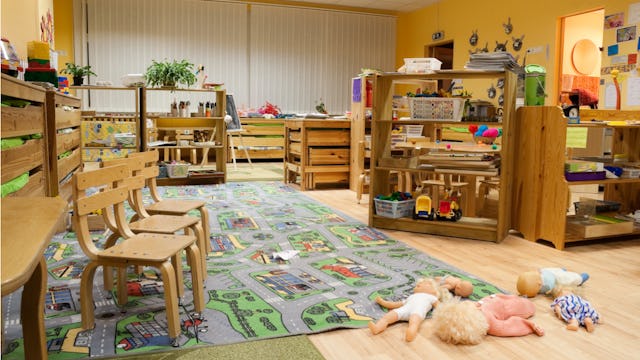Finland Is Getting Education Right, And We Should Take Notes

All work and no play is not a concept in Finland — at least not in their schools — and their children are thriving. So much so that Finland is home to one of the highest-performing educational systems in the world.
How do they do it? Well, look at how education is approached in the United States. Look very closely. Then throw it in the garbage, because Finland is basically the antithesis to an American education.
Children in Finland don’t begin their formal education until they are 7 years old. Sounds outrageous, right? How on earth do all of those parents handle the cost of daycare that long for each child?
RELATED: How To Take Better Notes In College To Help You Raise Your Grades
They don’t.
Every Finnish citizen is guaranteed free child care and a free education. The daycares focus on social skills and letting kids be kids. The preschools are high in quality with every preschool teacher having a bachelor’s degree. Here in the U.S., many children do not have access to preschool, let alone good preschools. Quality is scattered and often comes at a higher cost, further disenfranchising the poor.
School days in Finland are shorter, on average only five hours. Those five hours are not broken up by subject because lessons are interdisciplinary, allowing for more than one subject in a single lesson. Combinations of science and math or teaching one subject in a foreign language allow for more ground to be covered. I’m guessing it also aids in keeping children engaged since this is a less-repetitive method than we are generally used to. in the U.S.
Even with these shorter days, Finns aren’t trying to cram a ton of instruction into their class time. They are big proponents of play-based learning. And for every 45 minutes in class, children are required by law to have a 15-minute break. This is likely keeps their children from feeling the burnout that many of us see in our kids when they come home from school.
Think that kids in Finland have the leg up because less class time leaves more room for homework? Guess again. Students spend less than three hours a week on homework.
While students in the U.S. are expected to start reading in kindergarten, even if they are starting school with no early reading skills, Finnish children often don’t read until they are 7 or 8 years old.
Also, there are no standardized tests in Finnish schools either. Since the entire system focuses heavily on play and encouraging a love of learning instead of an obligation to absorb information and regurgitate it on a test form, there isn’t much use for the Scantron.
And likely the biggest driver behind the Scandinavian country’s standing? Their teachers. How they, themselves, are taught. How they spend their time working. How they are paid and how they are viewed by their fellow citizens. All are giant leaps from how things are done in the U.S. where teachers are overworked and underpaid.
Teaching is a selective profession (only 1 in 10 is accepted into a teaching program) and comes with a level of prestige we just don’t see here. Instead of spending countless hours (often far more than the standard 40-hour workweek) working by themselves with students or alone in their classrooms, teachers in Finland spend a large portion of their time working together. And most importantly, their teachers are paid higher, competitive wages. If you want children to grow up to be the best and the brightest, they need to be taught by the best and the brightest. And how do you attract the best and the brightest? By fairly and properly compensating them.
None of these concepts are outlandish, and it’s easy to look at them, separately or together, and understand why they work for Finland. If we want to improve the schools in the United States — and there is plenty of room for improvement — we would do well to take a page or 70 from Finland’s book.
This article was originally published on